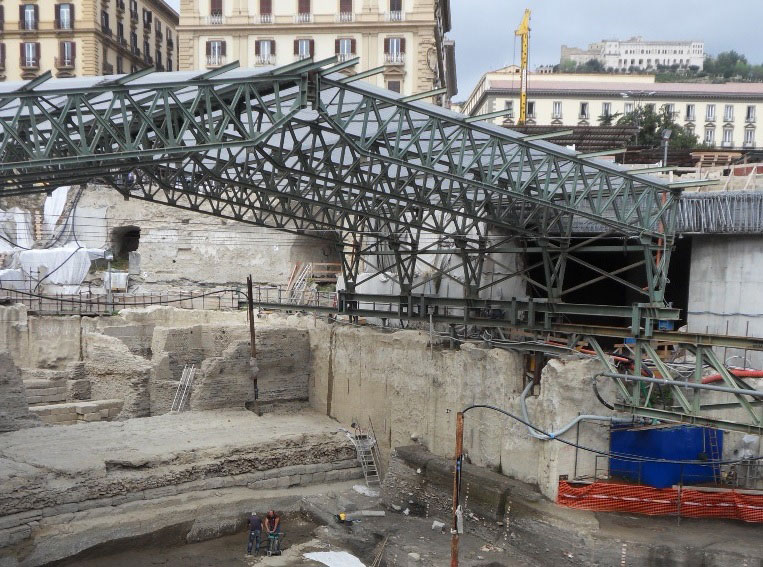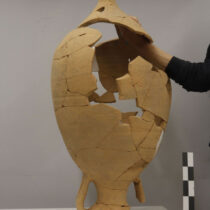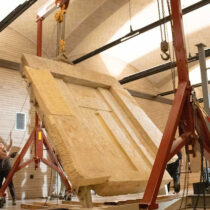Until now, historians and archaeologists had wondered about the impact of the Vesuvius eruption that destroyed Pompeii and Herculaneum on the Aqua Augusta aqueduct which supplied Naples and neighboring cities with water. Recent geochemical analyses have made it possible to directly link the lead in the water pipes of the period with that trapped in the sediments of the old port of Naples.
During excavations carried out in Naples on the occasion of a new underground line construction, archaeologists had the chance to investigate the city’s ancient, long-buried port, and more specifically the six-meter thick deposit of sediment layers accumulated in it over centuries.
By conducting geochemical analyses of these sedimentary deposits, archaeologists were able to retrace events that took place two thousand years ago, and reconstruct the history of Naples.
The analyses showed that the water of the port had been contaminated over the first six centuries AD with lead from the water circulation system of Naples and neighboring towns. This lead, which was the main component of the water pipes, dissolved into the water and spread into fountains and supply points before finally running into the port. The analyses mainly revealed two distinct lead isotopes, before and after the eruption of Vesuvius in 79 AD. They prove that the vast water supply system of the bay of Naples was destroyed by the volcanic eruption and reconstructed using lead from one or more different mining areas. This sudden change in the lead signal, which occurred about fifteen years after the eruption, suggests that the Romans repaired the aqueduct and water pipes over a relatively short period of time.
Also, in the 1st to 5th centuries AD lead is increasingly present in the sediments, suggesting an expansion of the hydraulic network or its intensification in the areas already supplied. From the beginning of the 5th century, however, the sediments are less contaminated, revealing that the water supply suffered further damage from barbarian invasions (the aqueduct was seized so as to cut off the town’s water supply), new eruptions of Vesuvius in 472 and 512, epidemics or the city’s economic and administrative collapse.
This interpretation of metal pollution in ancient port sediments, which makes it possible to retrace the history of a region, could be applied to other civilizations and geographical areas. In ongoing debates about the Anthropocene, this approach could provide new perspectives on the dynamics of human footprint on the environment.





